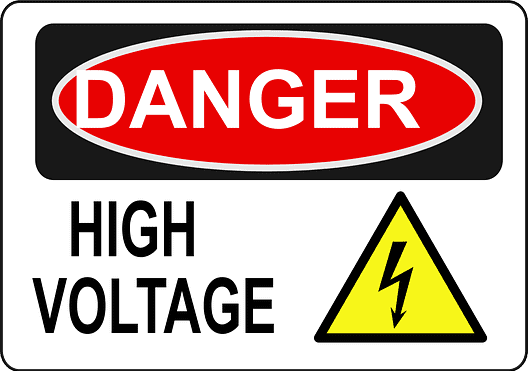Remember seeing the classic bow-tie party? Subtle light bulbs illuminating an elusive blind date? Or even a friend’s dim-lit movie night? That’s where dimmer switches add that extra detail.
Dimmer switches are a useful addition. A simple device that can transform any home environment.
Dimmed light bulbs run at a lower voltage, so you can save on electricity too. But does that extra convenience affect the lifespan of your bulbs in any way?
Dimmer switches work in different ways. The effect on bulb life varies with each type. Some dimmer switches will reduce a light bulbs’ lifespan more than others. It depends on the voltage and how it operates with the electrical system you have at home.
What Can Affect The Bulbs Life?
Many factors affect a bulb’s life.
The size, wattage, heat level, internal wiring, chemicals, base type, even the shape of the bulb plays a role when it comes to the lighting.
Light bulb manufacturers test light bulbs’ longevity from increased pressure on internal components and exposing the half-life.
Using an accelerated power current, they can work out the average rated lifetime hours.
Based on the collated data, they then conclude the Average Rated Lifetime Hours (ARL).
ARL light bulb tests also incorporate reasonable household conditions during tests. But, the results from a bulb will depend on the real-life environment.
A hot environment (oven) will differ from a colder climate (freezer or outside porch). A bulb used in a wet environment (front door or garden) will also have different results.
Here is a little table with ARL standards for incandescent, halogen, and LED bulbs, which are less affected by switching power cycles.
| Bulb Type | ARL (Average Rated Lifetime) |
|---|---|
| Incandescent | 750 – 2,000 hours |
| CFL | 10,000 – 15,000 hours |
| HID | 1,000 – 3,000 hours |
| Halogen | 2,000 – 3,000 hours |
| LED | 10,000 – 25,000 hours |
Dimmer switches affect the lifespan of different bulbs, differently. Over time, the daily use of a dimmer switch will also affect an incandescent, a halogen, an LED and a CFL in different ways.
Read more: Do Dimmer Switches Heat Up?
Do Dimmers Reduce Bulbs Lifespan?
Some bulbs don’t fare very well with frequently being dimmed and brightened and by being at a dimmed state for a long duration.
Diming works through a constant shift in electricity. Frequent and repeated adjustments on the dimmer switch can wear down the bulb’s internal components that can lead it to stop working.
The upside is less power recessing the bulb, reducing the brightness, and dimming the light more efficiently. Some bulbs thrive with dimmers while other bulb types don’t do so well.
How long an LED lasts is mostly determined by its ‘junction temperature,’ which is the temperature at the circuitry located at the bulb’s base. The lower the junction temperature, the better the LED operates.
Dimming an LED reduces the LED junction temperature. Therefore, LEDs are generally unaffected by dimming. In fact, the lower heat output is even better for their lifespan.
On the other hand, dimming an incandescent using a TRIAC based dimmer might decrease its lifespan. The quick turning on and off of the current supply to the filament causes it to vibrate.
This is not good for the thin and delicate tungsten filament and can reduce its lifespan. In fact, if the dimmer is set low at about 20%, you may hear the ringing sound of the vibration.
Halogen and incandescent bulbs give off light due to the evaporation of tungsten atoms of the filament. So as the usage of the bulb increases, the filament wears thinner. The filament is at a greater risk of breaking during the dimmed, vibrating state.
In fact, halogen bulbs especially lose from the dimming because the gases inside the halogen bulb, which are meant to make the bulb last longer, only function well at a higher temperature.
Dimming reduces the filament’s temperature, and the gases no longer function as they are meant to. This again reduces a halogen bulb’s lifespan.
CFLs also need special dimmers because standard dimmers drastically reduce their lifespan and result in catastrophic failure.
However, one interesting thing that is a by-product of using modern TRIAC dimmers for all bulb types is the reduced use of power and consequent savings in electricity usage.
It definitely depends on how many bulbs are being used, for how long, and how far you’ve dimmed it. The more the bulbs and higher the dimming, the more the savings.
It’s not substantial, but rather than keeping your lights on at full brightness at all times, you can opt for dimming for certain times of the day.
Smart switches like these (Amazon) can help you with setting this all up with your LEDs.
Eventually, this will also save your LEDs lifespan as it operates for longer, at a dimmed setting.
What About Variable Current Caused By The Dimmer?
Older generations of dimmer switches used a part called a rheostat.
Rheostats changed current and resistance, which in turn generated wasteful excessive heat, often causing bulbs to blow out.
Although they were very inefficient, they worked okay-ish with incandescent bulbs. As they increased the resistance at the rheostat, less electricity reached the bulb itself.
This, in turn, dimmed the light output.
Luckily dimmer switches have significantly progressed since. Most modern dimmer switches use a TRIAC switch.
It’s a device that runs at high-speed to turn current on and off without messing around with the current. This switching in power causes the dimmed effect in light bulbs.
Because of that, incandescent bulbs are not the best to use with TRIAC as they don’t like being turned on and off. This being said, they will most likely work fine.
But as I mentioned before, the number of adjustments you make on the dimmer switch will transform light bulbs’ lifespan.
The more you use, the dimmer, the more likely that a standard bulb will wear out quicker.
Say if you use a dimmer switch in the morning, go out to work, come back in the evening, and have had it on throughout the day, this will affect the bulb’s life.
You should also be mindful of how much variable voltage changes from the light bulb to the light bulb.
Incandescent and halogen use variable voltage components because they work based on resistance. CFLs and LEDs use a single voltage channel.
Suppose your light bulb isn’t suited for variable voltage. In that case, the light bulbs’ internal components won’t work with the dimmer switch or erode sooner.
Newer CFLs and LEDs have variable voltage components, e.g., some LED lamps that use a constant current 230V LED driver does work with fluorescent-type dimmers.
Final Words
Dimmer switches are an affordable way to transform your home environment.
But you can’t change the way your home electrical system works. So, making the right choice on light bulbs and dimmer switches is the next step.
Both light bulbs and dimmer switches are equally important. Their design and the suggested purpose should be your guide for a final decision.
And before making a final decision, it’s worth asking…
Is this dimmer switch suitable for the electrical system in my house?
Will I use this light bulb in a favorable operating condition suggested by the manufacturer?
Looking for an LED bulb but not sure what type you need?
Check out my free bulb picker and select the right bulb within few clicks.




